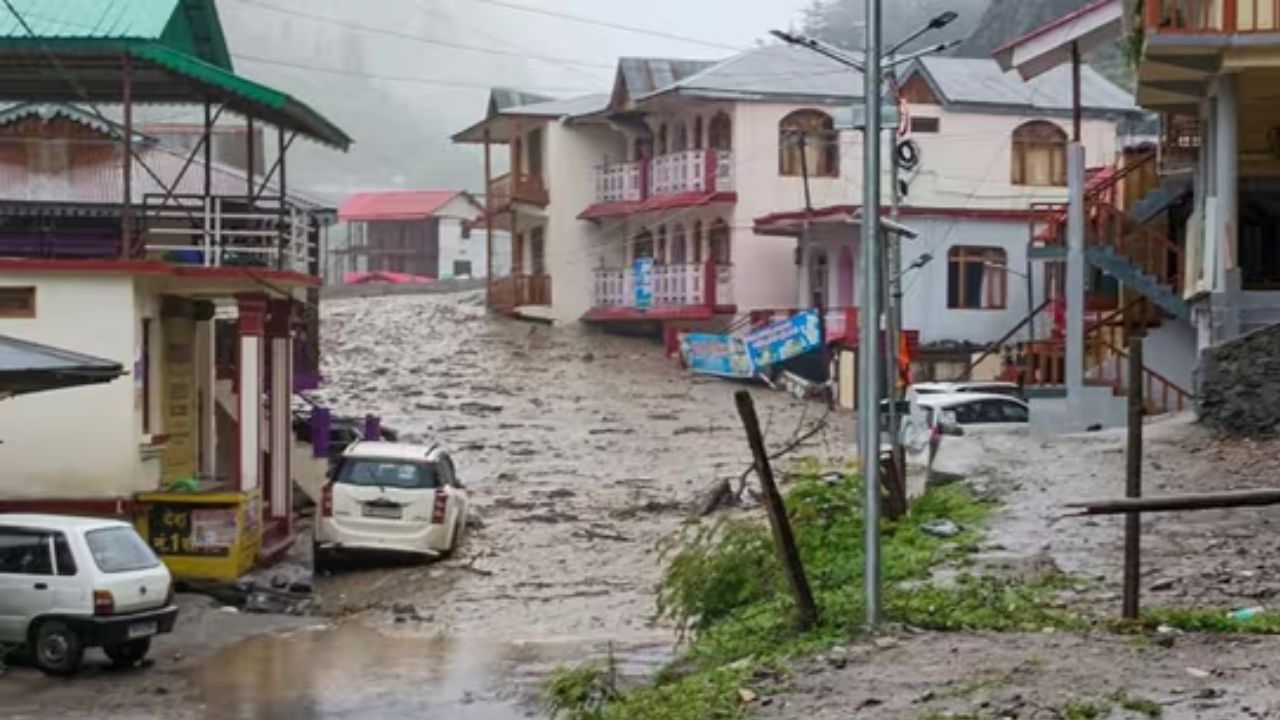 English
English

A cloudburst in Uttarkashi triggered deadly flash floods (120-150 km/h), killing 4 and leaving 50 missing. Torrents carrying debris flattened riverside homes as rescue teams (NDRF/SDRF) raced against time. Climate-vulnerable hills need stronger disaster planning to mitigate such catastrophes.

Huge devastation due to cloudburst in Uttarkashi
Uttarkashi: A terrible accident occurred due to a cloudburst in the Dharali area of the Uttarkashi district of Uttarakhand on Tuesday. A sudden flood and deluge of debris killed at least 4 people, while about 50 people are missing.
This deluge from the mountains destroyed many houses built on the riverbank. Police, army, NDRF, and SDRF teams have been deployed on the spot for rescue operations. Additional army helicopters have been sought to speed up rescue operations.
What is a cloudburst?
A cloudburst is a terrible weather phenomenon in which excessive rainfall (more than 100 mm) occurs in a very short time (20-30 minutes). This phenomenon is mainly seen in hilly areas like Uttarakhand, Himachal Pradesh, Ladakh, and Kashmir.
Unlike normal rain, during a cloudburst, streams of water fall at a speed of 50-100 km/h, which has an effect similar to that of a waterfall.
Scientific explanation of cloudburst
1. Rapid condensation: When moist air collides with mountains and rises, there is sudden massive condensation due to cold temperatures.
2. Formation of water mass: The condensed water vapor turns into large droplets and forms a huge water mass, which the clouds cannot handle.
3. Rapid fall: While falling from the height of mountains (2000-5000 m), the speed of water reaches 70-100 km/h due to gravity.
4. Slope effect: On mountain slopes, this water flows even faster and reaches a speed of 120-150 km/h, which brings devastating floods carrying debris and rocks along with it.
Why so much destruction?
- Water pressure: The pressure of heavy water falling all at once weakens the walls and foundations of buildings.
- Foundation erosion: Water filling the shallow foundations of hill houses washes away the soil, causing the structures to collapse.
- Flash flood: In sudden floods, strong currents of water sweep away entire villages.
Relief and rescue
The government has immediately started relief operations. NDRF teams have started searching for the missing people, while army helicopters are evacuating the injured and delivering relief material. The Meteorological Department has also issued a warning of heavy rains in the future, which may cause problems in rescue operations.
Cloudburst is a natural disaster whose magnitude is difficult to prevent, but the damage caused by it can be reduced by better forecasting and improving hill construction policies. There is an urgent need to strengthen disaster management in sensitive areas like Uttarakhand.